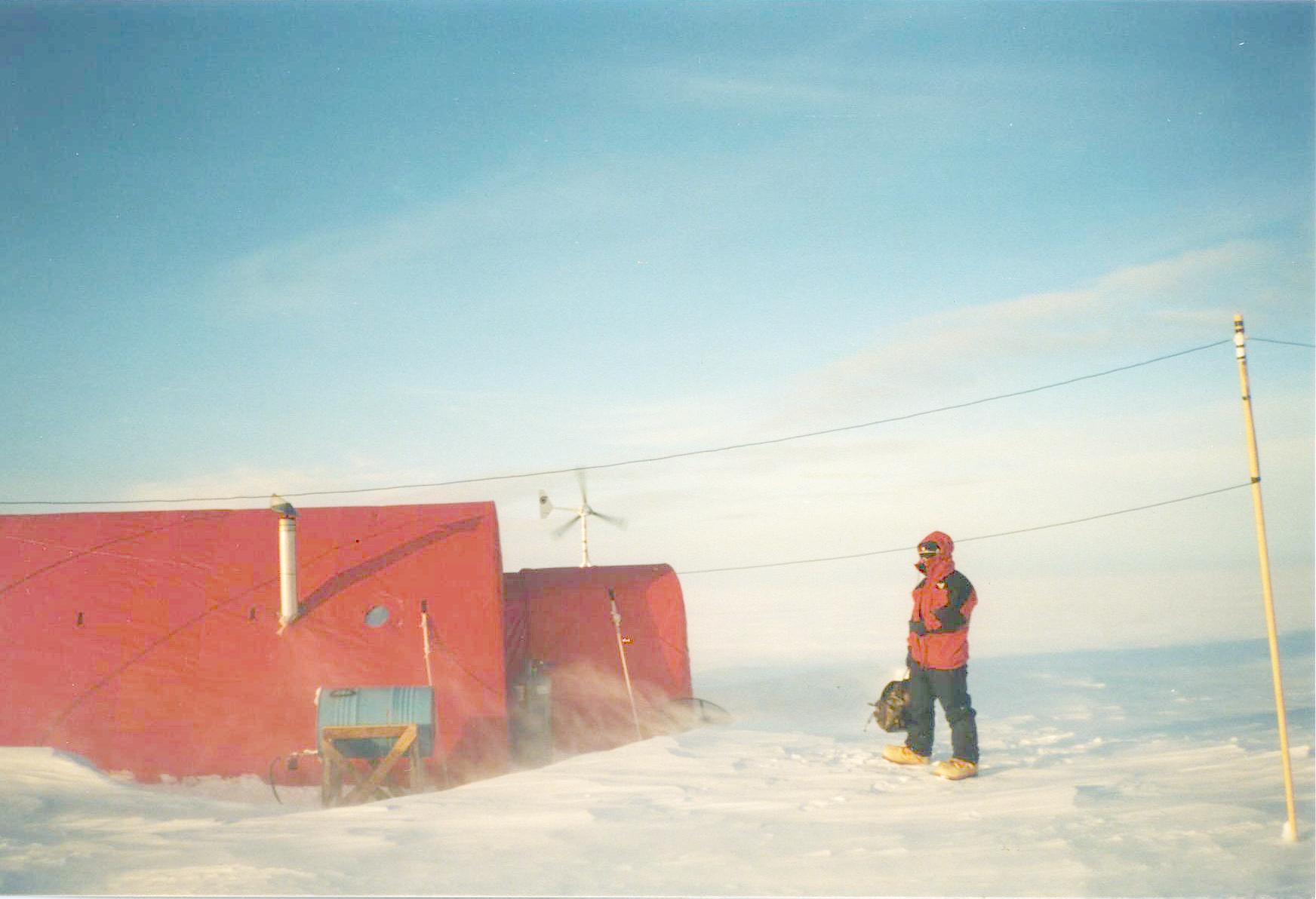Jamesway Hut on:
[Wikipedia]
[Google]
[Amazon]
 The Jamesway hut is a portable and easy-to-assemble
The Jamesway hut is a portable and easy-to-assemble
Quonset. The Huts.
{{Huts Huts Buildings and structures in Antarctica
 The Jamesway hut is a portable and easy-to-assemble
The Jamesway hut is a portable and easy-to-assemble hut
A hut is a small dwelling, which may be constructed of various local materials. Huts are a type of vernacular architecture because they are built of readily available materials such as wood, snow, ice, stone, grass, palm leaves, branches, hid ...
, designed for polar
Polar may refer to:
Geography
Polar may refer to:
* Geographical pole, either of two fixed points on the surface of a rotating body or planet, at 90 degrees from the equator, based on the axis around which a body rotates
* Polar climate, the c ...
weather conditions. This version of the Quonset hut
A Quonset hut is a lightweight prefabricated structure of corrugated galvanized steel having a semi cylindrical cross-section. The design was developed in the United States, based on the Nissen hut introduced by the British during World War I ...
was created by James Manufacturing Company of Fort Atkinson, Wisconsin
Fort Atkinson is a city in Jefferson County, Wisconsin, Jefferson County, Wisconsin, United States. It is on the Rock River (Illinois), Rock River, a few miles upstream from Lake Koshkonong. The population was 12,579 at the 2020 census. Fort Atkins ...
. A Jamesway hut had wooden ribs and a type of insulated fabric covering then used by the Army Air Corps. Insulated blankets in 1.2 m (3 ft 11 in)-wide lengths were made with glass fiber
Glass fiber ( or glass fibre) is a material consisting of numerous extremely fine fibers of glass.
Glassmakers throughout history have experimented with glass fibers, but mass manufacture of glass fiber was only made possible with the inventio ...
insulation faced with flame-proof muslin
Muslin () is a cotton fabric of plain weave. It is made in a wide range of weights from delicate sheers to coarse sheeting. It gets its name from the city of Mosul, Iraq, where it was first manufactured.
Muslin of uncommonly delicate handsp ...
and enclosed in plastic-treated cotton
Cotton is a soft, fluffy staple fiber that grows in a boll, or protective case, around the seeds of the cotton plants of the genus ''Gossypium'' in the mallow family Malvaceae. The fiber is almost pure cellulose, and can contain minor perce ...
that was water-, vermin-, and fire-proof. The hardware (nails, fasteners, and connecting bars) was the only metal component. The whole package weighed 540 kg (1,190 lb) for a 5 metres (16 ft)-square hut. Its wooden packing crate
A crate is a large shipping container, often made of wood, typically used to transport or store large, heavy items. Steel and aluminium crates are also used. Specialized crates were designed for specific products, and were often made to be reusa ...
s were designed for reuse as the hut floor.
The storage/floor sections, each were made from plywood and insulated with R-7 fiberglass insulation, which provided a portable, warm and cleanable floor. The wooden arches holding up the roof were attached to the floor sections with steel fittings and wing nuts, and were strong enough to hold a winter's snow. The arches, the key to the design, were curved, glue-laminated wooden beams on centers that folded in quarters on steel hinges and removable pins.
The hut became famous for providing portable warmth and shelter for the U.S. Armed Forces when the Japanese invaded the far Aleutian Islands
The Aleutian Islands (; ; ale, Unangam Tanangin,”Land of the Aleuts", possibly from Chukchi language, Chukchi ''aliat'', "island"), also called the Aleut Islands or Aleutic Islands and known before 1867 as the Catherine Archipelago, are a cha ...
in Alaska during World War II. More huts were manufactured in the late 1940s for use in the Korean War; many of these have been used by the U.S. Antarctic Program (USAP) from the initial Operation Deep Freeze
Operation Deep Freeze (OpDFrz or ODF) is codename for a series of United States missions to Antarctica, beginning with "Operation Deep Freeze I" in 1955–56, followed by "Operation Deep Freeze II", "Operation Deep Freeze III", and so on. (There w ...
operation from 1956 to 1961 in support of the International Geophysical Year
The International Geophysical Year (IGY; french: Année géophysique internationale) was an international scientific project that lasted from 1 July 1957 to 31 December 1958. It marked the end of a long period during the Cold War when scientific ...
(IGY), up to the present time.
References
External links
Quonset. The Huts.
{{Huts Huts Buildings and structures in Antarctica